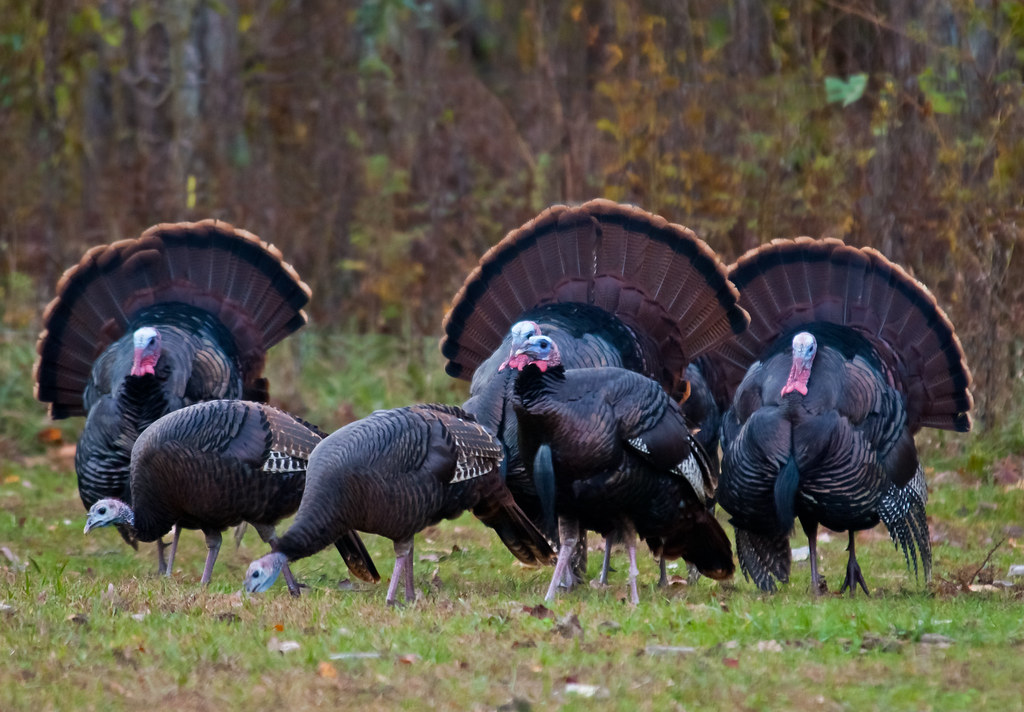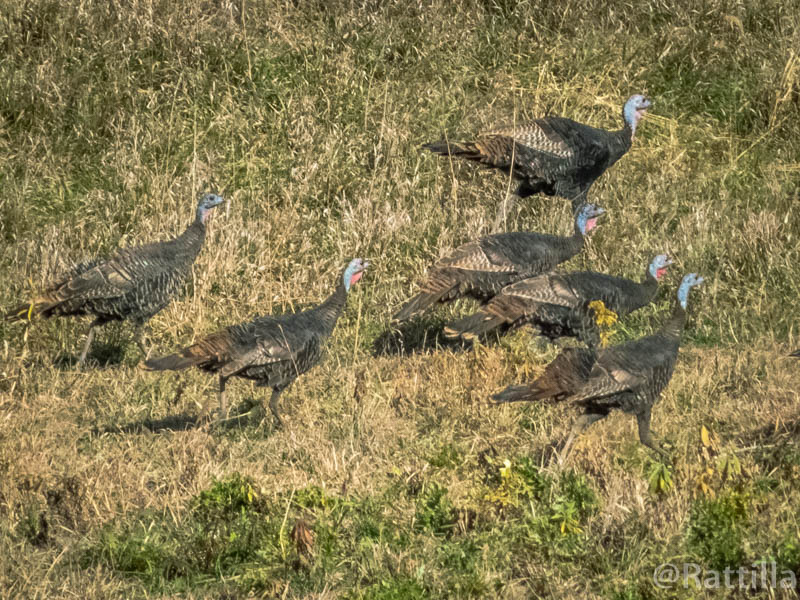
Studies have shown that healthy wild turkeys can live up to two weeks without food. Turkeys have been known to spend a week or more on a roost when a severe winter storm strikes. Feeding turkeys during harsh winter months is generally not recommended nor needed. They can move long distances to find food, but will stay in a small area if food is locally abundant. Turkeys can scratch through 4 to 6 inches of snow to find food. They frequently spend time in valley farm fields feeding on waste grain and manure spread by the farmers. waste grain, manure, silage)ĭuring the winter, turkeys reduce their range, diminish their daily activities, and often form large flocks. Season-dependent, the wild turkeys' diet includes:

The poults can fly when they are about two to three weeks old from then on, they will roost in trees at night. The hen moves her brood into areas of grassy or herbaceous plants where the young, called poults, can feed on the abundant supply of insects. Over a period of two weeks, the hen lays 10 to 12 cream-colored eggs which hatch after 28 days of incubation, usually late May or early June. Her loosely formed nest is usually in a wooded area, but can be in brush or an open field. A single tom will mate with many hens.Īfter mating, the hen goes off by herself to nest. During this time, the toms perform courtship displays-strutting, fluffing their feathers, dragging their wings and gobbling-all to attract willing hens. The turkey breeding season begins in early April and continues through early June. Maintained by the Cornell Lab of Ornithology. Wild turkey range map from Birds of the World, Less than 10 percent of the female population have a beard, and less than 1 percent have spurs. Hens have a rusty-brown body and a blue-gray head. The females (hens) are smaller than toms and weigh 9 to 12 pounds. Mature males are about 2.5 feet tall and weigh up to 25 pounds. They have a long beard of hair-like feathers on their chests and spurs on their legs that can be from 0.5 inches to 1.5 inches in length.
#FLOCK OF TURKEYS SKIN#
Adult males, also called "toms" or "gobblers", have red, blue, and white skin on the head during the spring breeding display.

The Eastern wild turkey is a large and truly magnificent bird. At the time of European colonization, wild turkeys occupied all of what is currently New York State south of the Adirondacks. Turkeys were widespread when the Europeans arrived and may have predated the earliest human inhabitants. Whatever the reason, it appears that the flock is safe and thriving in the heart of Asheville.The wild turkey is native to North America. Maybe they’ve read that Asheville is a great place to retire – or maybe they’re an art-loving flock – or maybe they’ve heard about the success of the deer in Biltmore Forest. (’s photographer was able to negotitate a safe exit.)Īpparently, the Asheville flock has found the streets and lawns of the city to be a “suitable habitat,” as they show no obvious signs of any interest in leaving. Second photo on right is a picture of the dominant male turkey taking exception to having his flock’s picture taken. The group estimates about 100,000 wild turkeys now live in North Carolina. The group’s efforts have paid off handsomely in both North Carolina and South Carolina every county in both states now support wild turkey populations (although precious few of them are actually city dwelling birds). In the mid-1980s, the organization started an effort to reestablish the Eastern wild turkey in all suitable habitats of the eastern United States by the year 2000.

Just why the turkeys have taken up residence in a very urban part of town is anyone’s guess, but part of the reason they are around might be attributable to the efforts of a wildlife group named the National Wild Turkey Federation. Top photo shows Asheville’s own wild turkey flock “cruising” through the Historic Manor Inn Apartments’ parking lot.
#FLOCK OF TURKEYS DRIVERS#
The feathered tribe of maybe twenty or so can be found at any number of locations in central and north Asheville, casually strolling across parking lots and lawns – or right down the center of streets – stopping traffic all the while, as amazed and amused drivers patiently wait for the crowd “turkus maximus” to meander on their way.

A somewhat unlikely choice, given that wild turkeys tend to gravitate toward more rural and less populated areas in which to reside, Asheville has embraced its wayward flock. Veritable traffic stoppers, and the topic of much conversation around the office, a rather large flock of wild turkeys has decided, like so many others, that Asheville is the place for them. Wild Turkey Flock Finds Asheville To Its Taste Pays Recent Visit to Historic Manor Inn Apartments


 0 kommentar(er)
0 kommentar(er)
